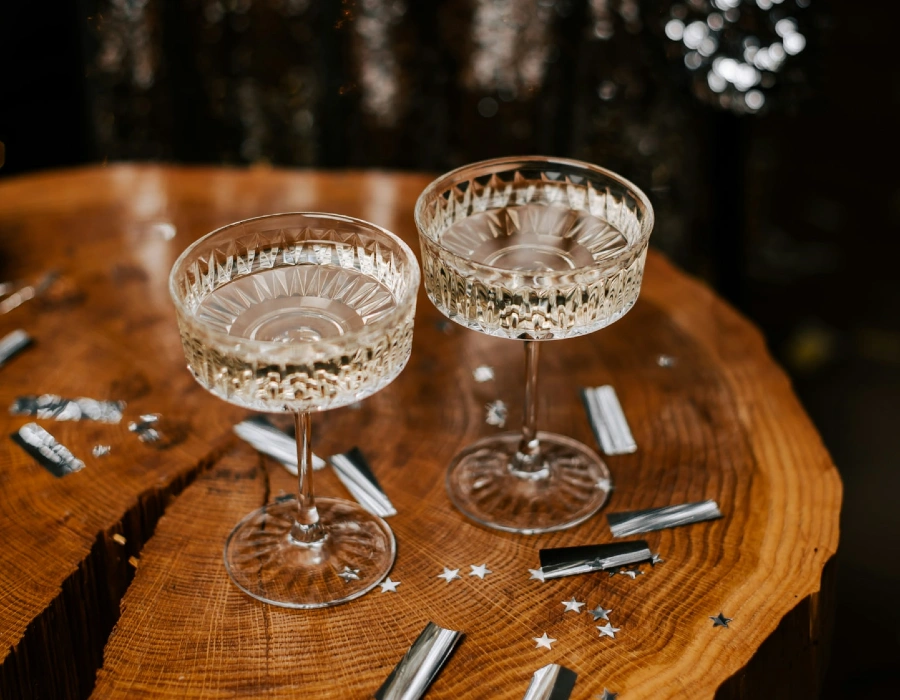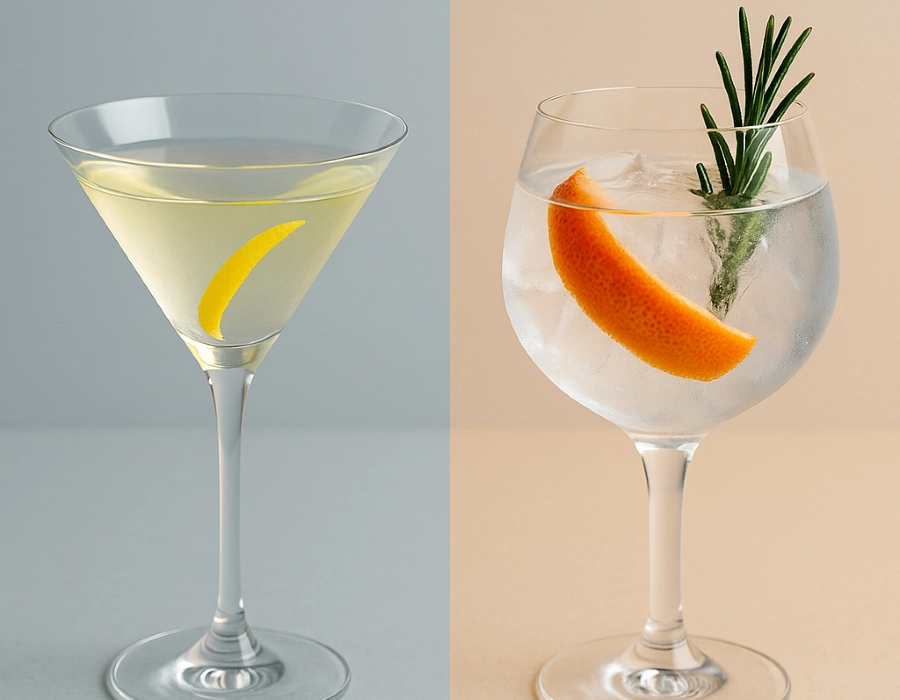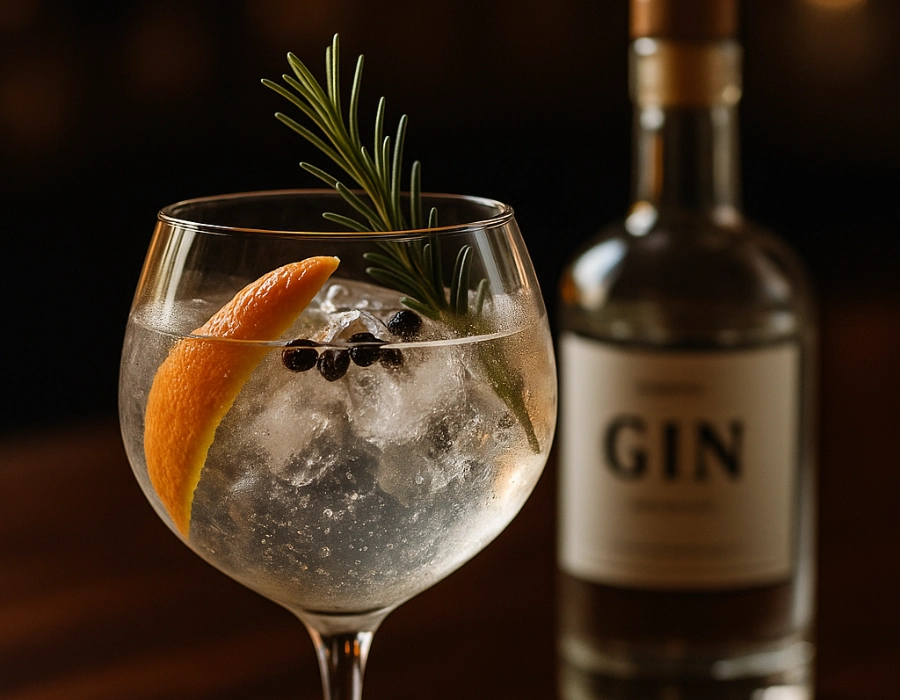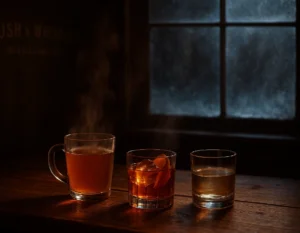Gin has never been quiet. From medicinal purposes in medieval Europe to its notorious reputation as Mother’s Ruin in 18th-century London, this spirit has always made an impression. Today’s gin renaissance presents drinkers with an exciting choice: the crisp authority of London Dry Gin or the creative freedom of New Wave modern gin.
At Hush and Whisper Distilling Co. in Bryan, TX, we’ve crafted our Original Gin to honor both traditions. Understanding the London Dry vs New Wave debate means understanding how gin distillation evolved and where gin makers are taking this beloved spirit next.
Related Article: What Is Gin Made From?
Understanding Gin: The Foundation
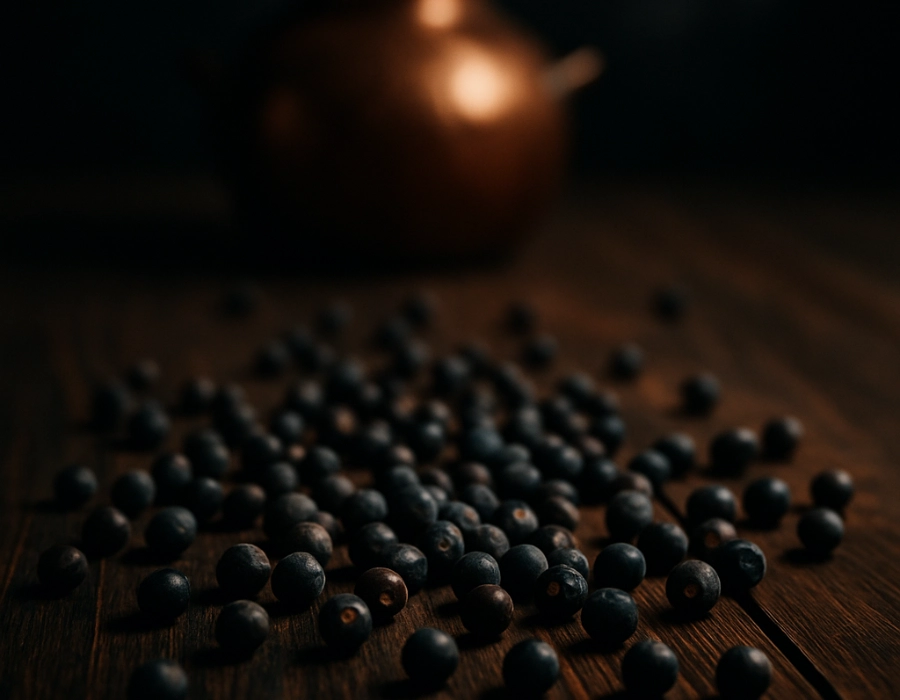
Every distilled gin starts with the same essential building blocks: a neutral spirit infused with botanicals, always anchored by juniper berries. But that simple definition barely scratches the surface of what gin can become.
What Is Gin?
Gin is a spirit defined by its botanical ingredients and distillation process. The base spirit, typically made from fermentable base grains, wheat, or even grapes, is redistilled with juniper and other botanicals to create the final product. The alcohol content usually ranges from 37.5% to 47% ABV, though high proof versions like Navy Strength can reach 57% ABV or higher.
The Ancestors: Genever and Jenever
Before London perfected its style, gin began in the Netherlands as Genever and Jenever. These spirits were made from malt wine spirits and carried a heavier malty flavor, reminding drinkers more of whiskey or brandy than the crisp dry gin we know today. This heritage explains why some gin enthusiasts and wine enthusiast communities appreciate the historical depth behind every bottle of gin produced today.
The Gin Family Tree
The world of gin extends far beyond London Dry vs New Wave. Old Tom Gin brings slight sweetness to the palate. Sloe Gin features berry infusions that transform the spirit into something closer to a liqueur. Pink Gin adds bitters for color and flavor. Compound gin skips redistillation entirely, adding botanical ingredients directly to the base spirit. Each style serves a purpose in the broader story of gin production.
London Gin: The Classic Standard
London Dry represents more than a regional style. It’s a production method that changed how distillers approach their craft.
Origins and Definition
Despite its name, London Dry is a method, not a location. It became the global standard in the 19th century when advances in gin distillation allowed for cleaner, more consistent spirits.
Flavor Profile
Juniper dominates, supported by coriander, angelica root, and sharp notes of lemon peel and orange peel. Hints of spices or herbs may appear, but the finish remains dry. The alcohol content usually lands between 40–47% ABV.
Production Standards
London Dry requires all flavors to come from re distillation of the base spirit with its botanicals. No shortcuts, no artificial flavors, no sugar beyond trace levels. The precision tests every distiller’s craft.
New Wave Gin: The Modern Revolution
New Wave gin arrived when distillers decided tradition was a starting point, not a finish line.
Definition and Philosophy
Also called modern gin, this style grew from the 2000s craft movement. Juniper is present but often steps back, letting additional botanicals like cucumber, teas, and floral herbs take center stage.
Flavor Characteristics
New Wave profiles are wide-ranging. Some lean citrus and fruit, others explore savory herbs. The palate is often rounder and softer than London Dry, appealing to newcomers.
Production Innovation
Techniques like vacuum distillation preserve delicate flavors, while post-distillation maceration adds complexity. Brands like Bombay Sapphire led the way, but small-batch distillers now push the boundaries. Our Hush and Whisper gin bridges the two worlds with both structure and surprise.
London Dry vs New Wave: Side by Side
Understanding these styles means comparing how they differ across every dimension.
Juniper: Star vs Supporting Cast
In London Dry, juniper berries dominate from first sip to finish. Every other botanical exists to support that piney, resinous character. In New Wave, juniper provides the legal foundation but often retreats, letting other botanicals take the spotlight. This shift fundamentally changes how the spirit tastes and how it performs in cocktails.
Botanical Selection
London Dry relies on classic botanical ingredients: coriander seed, angelica root, citrus peel, orris root, and occasionally licorice root or cassia bark. New Wave opens the door to anything: rose petals, cucumber, tea leaves, tropical fruits, peppercorns, or regional herbs. The mixture can feature a dozen or more botanicals, each chosen to create a specific flavor story.
Sweetness and Texture
London Dry is austere, with no added sugar and a clean, dry finish. The mouthfeel is crisp, almost sharp. New Wave often feels softer and rounder on the palate, even without added sweetness. The choice of botanicals creates perception of fullness that makes these spirits more approachable for drinkers new to gin.
Production Flexibility
London Dry demands strict adherence to redistillation rules. Everything goes into the still together, and what comes out is your gin. New Wave allows post-distillation additions, vacuum distillation for delicate ingredients, and creative techniques that would disqualify a spirit from London Dry classification.
The Distillation Process: How Gin Is Made
Understanding gin distillation reveals why these styles taste so different.
Traditional Gin Distillation
A fermentable base like grain or molasses is infused with botanical ingredients and distilled. During this, essential oils are extracted, and cuts are made to capture the best fraction. The final product is adjusted for ABV and bottled.
Modern Techniques
Gin makers experimenting with vacuum distillation or cold compounding preserve delicate flavors. These innovations expand what gin can be, without losing its core identity as a distilled gin.
Where Hush and Whisper Original Gin Fits
Our approach at Hush and Whisper bridges the London Dry vs New Wave divide intentionally.
The Foundation
We start with bold juniper berries and bright citrus, the hallmarks of London Dry tradition. This backbone gives our gin the structure to perform in a classic Martini or Negroni. The distillation process follows traditional methods, extracting essential oils through careful redistillation.
The Innovation
We layer in fruit-forward botanicals and herbal notes that belong to the New Wave world. These additional botanicals reveal themselves gradually, creating a gin that tastes familiar on the first sip but offers something unexpected as it opens up. We’re not trying to be purists or rebels. We’re making a bottle that works whether you’re pouring tradition or exploring new flavors.
The Hush and Whisper Signature Serve
This drink showcases both sides of our gin’s personality.
Ingredients:
- 2 oz Hush and Whisper Original Gin
- 4 oz premium tonic water
- Fresh grapefruit peel
- 3-4 juniper berries, lightly crushed
- Sprig of fresh rosemary
Method: Fill a copa glass with ice. Pour gin and tonic. Express grapefruit peel oils over the glass, rub around the rim, then drop it in. Add crushed juniper berries and rosemary sprig. Give a gentle stir. The citrus and herbs amplify both our traditional backbone and modern botanical layers, creating a drink that works as an aperitif or a slow sipper.
Building Your Home Bar: Which Style to Choose
The best home bar includes both styles, but if you’re just starting, consider your drinking preferences.
Choose London Dry If:
You love classic cocktails like Martinis, Negronis, and traditional gin and tonics. Aside from that, you appreciate spirits with clear, bold flavors. Most of all, you want a gin that makes a statement rather than blending into the background. You’re a purist who values tradition and craftsmanship.
Choose New Wave If:
You’re new to gin and find traditional styles too sharp. You enjoy experimenting with creative cocktails and unusual flavor combinations, appreciate craft spirits and small-batch production, and want a spirit that sparks conversation and invites exploration.
Or Choose Both:
The real answer is that every home bar benefits from having both London Dry and New Wave expressions. Use London Dry for your Martini and Negroni. Reach for New Wave when you want to try something different or build a cocktail around specific botanical notes. The diversity makes gin one of the most versatile spirits behind the bar.
The Evolution Continues
The gin market has never been more exciting. London Dry remains the foundation, the measuring stick against which all other styles are compared. But New Wave has opened doors for distillers and drinkers alike, proving that gin can be more than one thing.
We see old styles resurging too. Old Tom Gin, with its touch of sweetness, has found new fans in craft cocktail bars. Sloe Gin appears in seasonal drinks. Even compound gin, once considered a shortcut, has champions among liquor enthusiasts who appreciate its straightforward approach.
For gin distillers, this diversity represents freedom. We can honor the past while pushing boundaries. Every bottle becomes a conversation between heritage and innovation, between what gin has been and what it can become.
Bring the Evolution of Gin Into Your Home Bar
Gin is not just liquor. It is heritage and innovation poured together, a conversation in every bottle. London Dry holds the line of history, while New Wave opens the door to new flavors. At Hush and Whisper, we choose both.
Whether you are stocking a home bar or mixing your next drink, our spirits belong in the story. Visit our distillery in Bryan, TX for a tasting, or pop in and try one of our signature cocktail.
Contact us today to plan a visit, order a bottle, or start building a collection that tells its own story.

